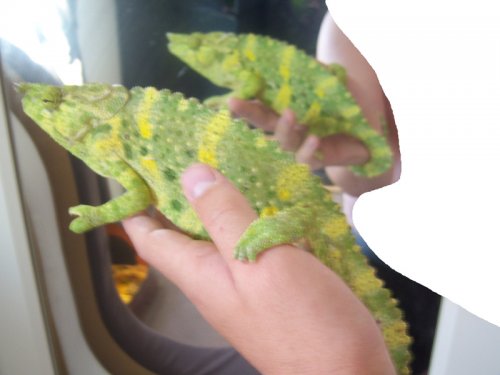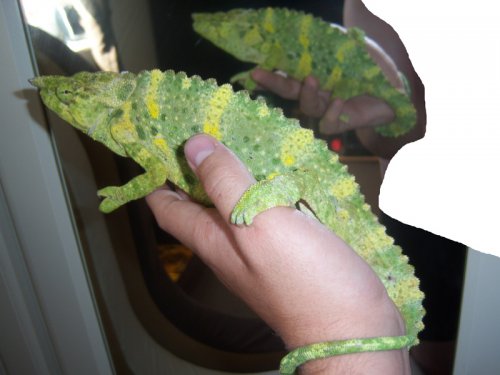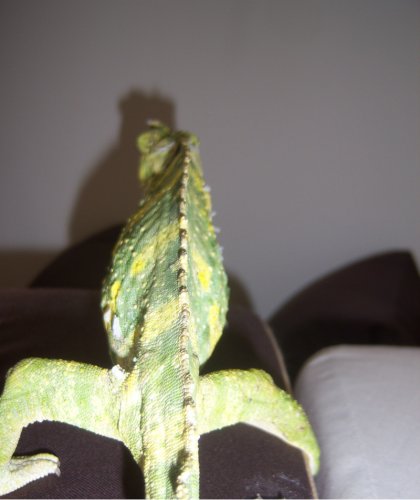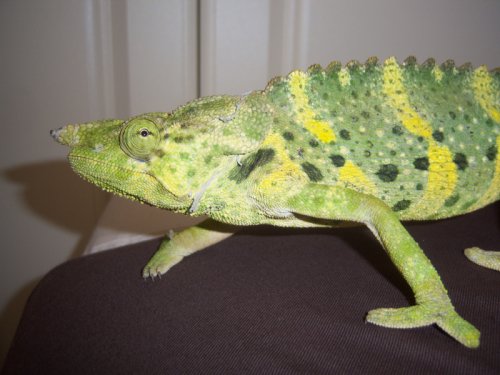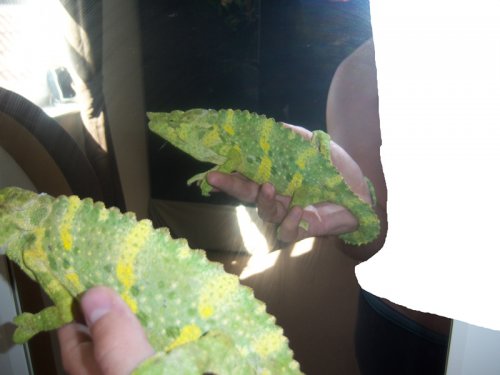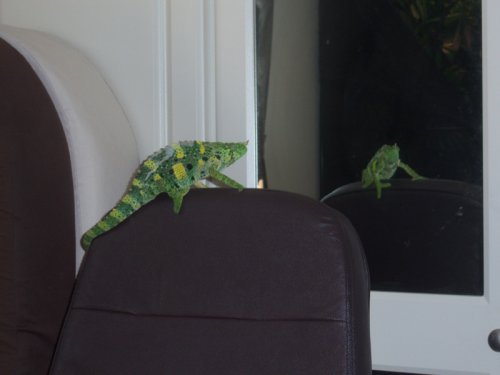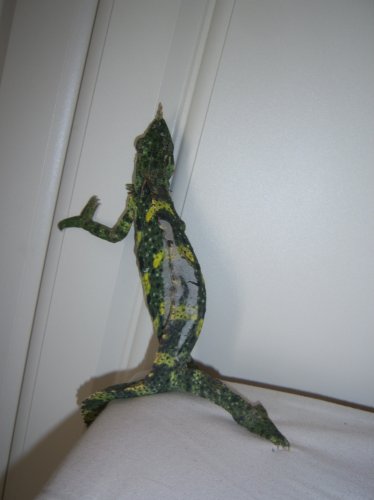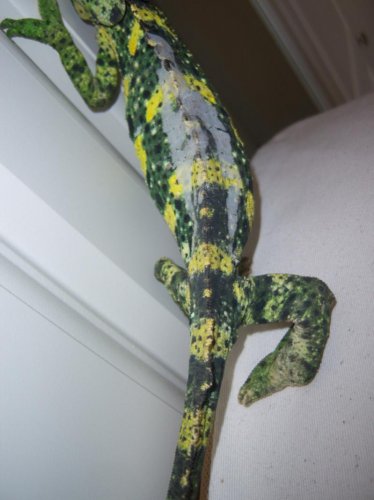I have two mellers chams and next to the tank (seperated by a non see through screen) I have a panther cham.
Earlier i was cleaning out the panther cham, he was in full sight of both my mellers.
One of the mellers paced the cage flapping its ears back and forth and the other meller didnt care in the slightest.
Would the ear flapping be common to a particular sex or is it shown off by both sex?
Im sure i have a male and female, and if that was the case, id suspect it was the female flapping her ears, but im not sure.
Earlier i was cleaning out the panther cham, he was in full sight of both my mellers.
One of the mellers paced the cage flapping its ears back and forth and the other meller didnt care in the slightest.
Would the ear flapping be common to a particular sex or is it shown off by both sex?
Im sure i have a male and female, and if that was the case, id suspect it was the female flapping her ears, but im not sure.

